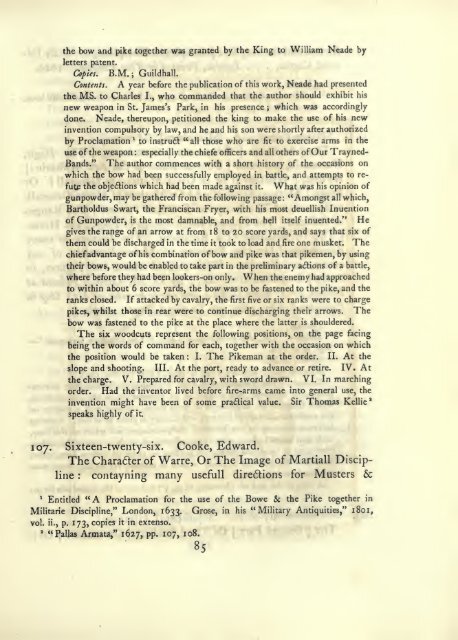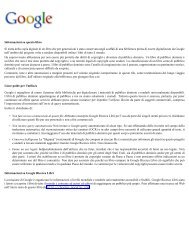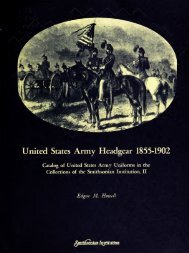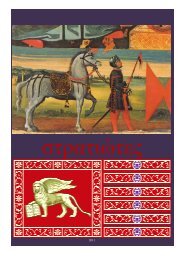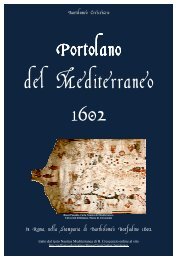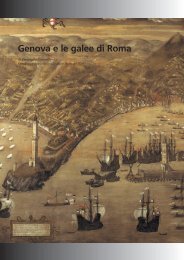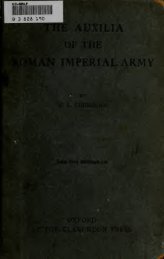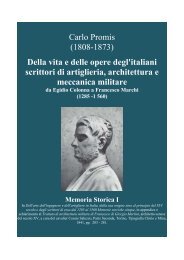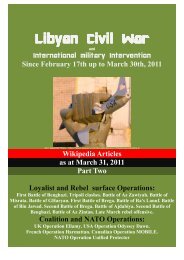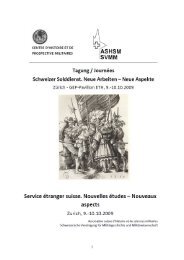A bibliography of English military books up to 1642 and of ...
A bibliography of English military books up to 1642 and of ...
A bibliography of English military books up to 1642 and of ...
Create successful ePaper yourself
Turn your PDF publications into a flip-book with our unique Google optimized e-Paper software.
the bow <strong>and</strong> pike <strong>to</strong>gether was granted by the King <strong>to</strong> William Neade by<br />
letters patent.<br />
Copies. B.M.; Guildhall.<br />
Contents.<br />
A year before the publication <strong>of</strong> this work, Neade had presented<br />
the MS. <strong>to</strong> Charles I., who comm<strong>and</strong>ed that the author should exhibit his<br />
new weapon in St. James's Park, in his presence ; which was accordingly<br />
done. Neade, there<strong>up</strong>on, petitioned the king <strong>to</strong> make the use <strong>of</strong> his new<br />
invention compulsory by law, <strong>and</strong> he <strong>and</strong> his son were shortly after authorized<br />
by Proclamation* <strong>to</strong> instruct "all those who are fit <strong>to</strong> exercise arms in the<br />
use <strong>of</strong> the weapon :<br />
especially the chiefe <strong>of</strong>ficers <strong>and</strong> all others <strong>of</strong> Our Trayned-<br />
B<strong>and</strong>s." The author commences with a short his<strong>to</strong>ry <strong>of</strong> the occasions on<br />
which the bow had been successfully employed in battle, <strong>and</strong> attempts <strong>to</strong> refute<br />
the objections which had been made against it. What was his opinion <strong>of</strong><br />
gunpowder, may be gathered from the following passage: "Amongst all which,<br />
Bartholdus Swart, the Franciscan Fryer, with his most deuellish Inuention<br />
<strong>of</strong> Gunpowder, is the most damnable, <strong>and</strong> from hell itself inuented." He<br />
gives the range <strong>of</strong> an arrow at from i8 <strong>to</strong> 20 score yards, <strong>and</strong> says that six <strong>of</strong><br />
them could be discharged in the time it <strong>to</strong>ok <strong>to</strong> load <strong>and</strong> fire one musket. The<br />
chief advantage <strong>of</strong> his combination <strong>of</strong> bow <strong>and</strong> pike was that pikemen, by using<br />
their bows, would be enabled <strong>to</strong> take part in the preliminary actions <strong>of</strong> a battle,<br />
where before they had been lookers-on only.<br />
When the enemy had approached<br />
<strong>to</strong> within about 6 score yards, the bow was <strong>to</strong> be fastened <strong>to</strong> the pike, <strong>and</strong> the<br />
ranks closed. If attacked by cavalry, the first five or six ranks were <strong>to</strong> charge<br />
pikes, whilst those in rear were <strong>to</strong> continue discharging their arrows. The<br />
bow was fastened <strong>to</strong> the pike at the place where the latter is shouldered.<br />
The six woodcuts represent the following positions, on the page facing<br />
being the words <strong>of</strong> comm<strong>and</strong> for each, <strong>to</strong>gether with the occasion on which<br />
the position would be taken : I. The Pikeman at the order. II. At the<br />
slope <strong>and</strong> shooting. III. At the port, ready <strong>to</strong> advance or retire. IV. At<br />
the charge. V. Prepared for cavalry, with sword drawn. VI, In marching<br />
order. Had the inven<strong>to</strong>r lived before fire-arms came in<strong>to</strong> general use, the<br />
invention might have been <strong>of</strong> some pradical value. Sir Thomas Kellie*<br />
speaks highly <strong>of</strong> it.<br />
107. Sixteen-twenty-six. Cooke, Edward.<br />
The Chara6ter <strong>of</strong> Warre, Or The Image <strong>of</strong> Martiall Discipline<br />
: contayning many usefull direftions for Musters &<br />
*<br />
Entitled "A Proclamation for the use <strong>of</strong> the Bowe & the Pike <strong>to</strong>gether in<br />
Militarie Discipline," London, 1633. Grose, in his "Military Antiquities," 1801,<br />
vol. ii., p. 173, copies it in extenso.<br />
'<br />
"Pallas Armata," 1627, pp. 107, 108.<br />
8s


